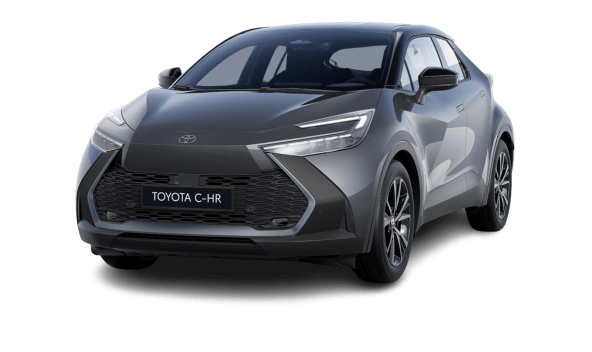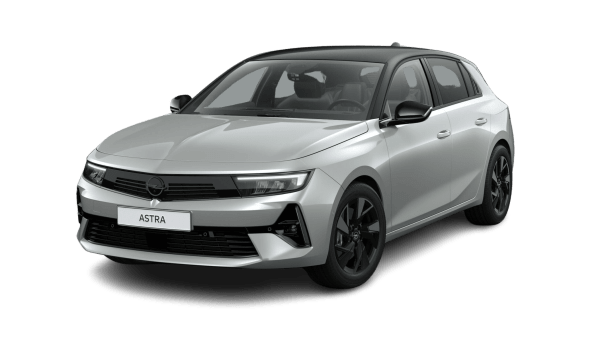How to Charge an Electric Car at Home
Discover your options for EV charging at home, charging speed/frequency and how to install a Level 2 charger, while keeping the costs of EV ownership down.
Read time
9 minutes
Date
07.28.2023
Share
Sales of electric vehicles are on the rise in the United States. Over seven percent of all vehicles registered in early 2023 were all-electric, which represents a 74 percent increase year-over-year. So, if you’re considering an EV for yourself or your family, you’re joining an accelerating number of Americans choosing to drive this way.
Many of the traditional concerns and questions about EVs are being answered — primarily, the buy price, lack of charging stations and driving range. Even with the potential long-term cost-savings, low maintenance and environmental benefits, some negative perceptions have traditionally prevented more Americans from making the switch. But that’s changing.
And if you’re not sure about meeting the higher cost price of an EV, a great way to “dip your toes in” is to opt for an EV car subscription. Unlike most car leases, subscriptions don’t tie you into a multiple-year contract, so you can try driving an EV and see if it’s for you.
Another of the traditional concerns about EVs was about charging. Here are details on how you can charge an electric car effectively at home (and elsewhere).
Find your FINN car
What you need to know about charging an EV at home
Unlike when you buy a hybrid car, buying an EV is a full commitment to going electrical. If the battery runs down, you can’t switch to a traditional engine. This is a major leap for many drivers and the first question is often: how can you be sure that your car is always charged?
The answer in most cases is to charge your electric car at home overnight before you leave the next day. This is generally the most convenient and affordable way to charge EVs for people living in a family home or an apartment— and whether or not they have a garage or private parking.
A dedicated home charging point can make charging faster and safer as well as more convenient. If you need to cover longer distances, however, you will be more reliant on public charging stations. Here are a couple of other things you need to know about charging an EV at home before we get into how you do it and the costs involved.
Charging speed
The charging speed for electric cars at home depends on where you plug your car’s battery into. All electric vehicles in the U.S. are supplied with a 110-volt-compatible home connector kit (an Electric Vehicle Supply Equipment or EVSE cable). This is a Level 1 charger that acts much like an extension cord. It plugs into a standard outlet so that you can easily charge your car (no extra installation is required).
And it will charge your car — but not very quickly. A Level 1 charger is best used for emergencies. This type of charging will take 8-16 hours to get an 80 percent charge. This may be sufficient for drivers who drive less than 50 miles a day and charge their cars overnight every night.
However, you can greatly speed up the charging process by installing a Level 2 wall charging station. This is a 208-volt to 240-volt charger. If you invest in a wall charger at home, you’ll only ever use the home connector kit in emergencies and it will likely stay in the trunk of your car until you need it.
A Level 2 charger will charge your EV’s battery to around 80 percent in just 4 to 5 hours at a charging speed of up to 45 km per hour. So, an average 40-mile daily commute can be covered with around an hour of charging. A level 2 charger will also provide extra peace of mind for longer trips and make you less reliant upon public or workplace chargers.
Level 3 charging stations are the fastest dedicated EV chargers and run at 480V+ (DC Fast Charging). Such chargers are neither required nor possible at home. They are usually reserved for commercial enterprises with the power setups and budget for the extra outlay.
NOTE: Tesla’s electric cars like the Tesla Model 3 come with a plug-in 120/240-volt Level 1/2 charger, which requires a 240-volt outlet (if you don’t have one, you will need a professional installation).
Charging frequency
How often should you charge an electric car at home? It depends on your intended usage and battery capacity. All EVs are powered by rechargeable batteries, each with a different capacity. One of the beauties of installing a charging unit at home is that you can charge the car when you like. It’s great to get into the habit of plugging it in after you get home and park the vehicle.
Overnight charging is recommended so that you leave the next day with a fully charged battery, Besides this, electricity is often cheaper at night. But charging whenever you park covers you if you need to take a quick trip at short notice. Charging stops automatically once the battery is full with a dedicated home charger, so leaving it plugged in overnight will not damage your EV.
Just as charging a mobile phone has become an essential part of life for most of us, charging an EV will become a habit you ease into. Fewer drivers now have charging problems after leaving home because of the wide availability of charging stations at workplaces and elsewhere (more info about this below).
Is now a good time to buy an electric car?
Now is a great time to buy electric. With gas prices not too far off their all-time highs and the environmental situation showing few signs of improvement, the move to a more sustainable and cost-effective way to drive is becoming more attractive.
U.S. households spend the equivalent of $5,000 a year on gasoline. You can turn that figure to zero by choosing an EV. However, the trade-off is the higher upfront costs with the average cost of a new electric car currently at around $64,000.
So, while it’s a good time to buy, it might be a better time to subscribe before you buy. A subscription allows you to drive a Tesla or other EV for a year (or more if you like) before stumping up the money required to own an EV outright.
What is required to charge an electric car at home?
Remember, the charging speed and capacity are determined by the size of the vehicle’s onboard charger as well as the power lever of the charging equipment.
To charge a car effectively at home, you’ll need:
- A home connector kit and standard outlet near where you park your car, or
- A home wall-mounted charger (Level 2): a compact weatherproof unit with a charging cable or a socket for plugging in a portable charging cable.
Note that a qualified technician is also required to install a wall-mounted charger.
How to buy a charger
A high-quality home electric charger for your EV will cost from around $350 up to $700 or more so it will pay to shop around. Spending a couple of hundred dollars extra on a charging unit ($500-$750) is advisable given the large investment involved in buying an EV.
You can buy a Level 2 wall-mounted unit on Amazon or at many national DIY stores like Home Depot and Lowe's. To make sure that you get the right charger for your EV, follow these steps:
- Research your options (preferably even before you decide which EV to buy/lease)
- If you decide on a Level 2 charger (recommended), shop around online
- Purchase from any reputable supplier
- Arrange a professional installation with a qualified electrician
Best chargers
Following are some of the best EV home chargers currently on the market:
- JuiceBox JuiceBox 40 Smart Electric Vehicle (EV) Charging Station with WiFi ($500-$600)
- ChargePoint Home Flex Electric Vehicle (EV) Charger ($680-$750)
- Tesla Wall Connector ($475-$500)
Low-budget charger options
- Grizzl-E Smart – Classic NEMA 14-50 ($380-$400)
- Lectron Lectron 32 NEMA 14-50 Level 2 EV Charger ($320-$350)
With the evolving technology, watch this space closely as more types of units come onto the market. We’re already seeing more portable plug-in chargers, units that chart your charging history and models that schedule charging sessions at specific times of the day.
How to install a charger
You should never attempt to install an electric charger at home without a certified electrician. It’s an additional expense but there are safety issues with higher-voltage electrical equipment. A little extra investment to hire a licensed professional is worth it if you’re about to fork out many thousands of dollars on an electric vehicle!
The installation will likely take a few hours. Try to be present during the process so that you can pinpoint the optimal location for the charger to the electrician.
The following steps are required:
- Decide on the precise location for the charger (where you usually park)
- Wall mount the charging unit (usually on a garage or other exterior wall)
- Connect it safely to the mains electricity supply
Most dealerships and even some manufacturers will advise you on where to buy a charger and how to get it installed. The technician you hire can answer any questions you have during or after installation.
Can you just plug in your electric car at home?
Yes, you can plug your car into a standard outlet at home using the connector kit that comes with all EVs. This will charge your car but at a much slower rate than a wall-mounted charger.
Can you plug a Level 2 charger into the dryer outlet?
Yes, you can plug a Level 2 charger into the dryer outlet because these chargers use 208 to 240-volt outlets, which are the same type as dryers are plugged into.
Other charging options
Most electric vehicle drivers charge 80 percent or more at home. However, a growing number of public and workplace charging stations are cropping up. Even if you have a home charger, it’s unlikely that you can plan for every eventuality so it’s good to have a couple of backup options if your EV’s battery is running down.
Public EV charging stations
Most fully electric cars are equipped for DC Fast Charging options. These are used in public charging stations (not homes) and can provide 10 to 20 miles of range per minute of charging. The number of public charging stations is increasing, with 130,000 online at present and 500,000 more public EV chargers planned by 2030. You can use a charging station locator app to find the nearest public charging station with an available charger when you’re on the go. Currently, California, New York, Florida, Texas and Massachusetts have the most public charging stations.
Public parking lots, malls, grocery stores, movie theaters, community centers, hotels and airports are all well-equipped with a variety of charging options. Some are free, some are subscription-based and others offer reasonable per-usage pricing (much less than the cost of gasoline). Plan ahead before driving your new EV and especially before embarking on a long trip.
Workplace charging stations
The workplace may be another convenient option for charging your EV. Check with your employer what their policy is for charging electric vehicles and if they haven’t yet considered implementing this, you could volunteer to research the topic to assist them.
The U.S. Department of Energy is actively promoting this charging option with employers so we should expect this to become even more commonplace across the U.S. in the coming years.
Is charging an electric car at home expensive?
Charging a car at home is much cheaper than paying for gasoline. The Federal Highway Administration (FHWA) states that the average American drives 13,476 miles per year. That’s approximately 1,123 miles per month.
An average EV will use about 375 kWh per year. At the U.S. average of 16 cents per kWh, charging an electric car at home would cost around $60 per month. Some charging costs are inevitable with EVs but you can avoid both the high upfront costs of buying a car and the ongoing headaches of car ownership by taking the subscription option with FINN.
Final thoughts
EVs provide a cost-effective, sustainable and stylish way to drive. Charging your EV at home makes driving simple and convenient and ensures that your vehicle is always ready to get you to where you need to be. However, the high upfront costs of buying an EV make other options attractive. With a car subscription from FINN, you get all the benefits of driving an EV without scary monthly car loan payments and many of the hassles of car ownership. A Tesla subscription is more flexible than buying or leasing a Tesla as you’re not tied into a long contract or loan period.
You can read more about this in our article on how the monthly costs of a Tesla Model 3 compare when buying, leasing and subscribing. At FINN, our commitment to sustainability means we want to help you make the switch to a fully electric vehicle. Included in our affordable subscription plans are registration, maintenance, repairs, roadside assistance, and insurance.


Final thoughts
EVs provide a cost-effective, sustainable and stylish way to drive. Charging your EV at home makes driving simple and convenient and ensures that your vehicle is always ready to get you to where you need to be. However, the high upfront costs of buying an EV make other options attractive. With a car subscription from FINN, you get all the benefits of driving an EV without scary monthly car loan payments and many of the hassles of car ownership. A Tesla subscription is more flexible than buying or leasing a Tesla as you’re not tied into a long contract or loan period.
You can read more about this in our article on how the monthly costs of a Tesla Model 3 compare when buying, leasing and subscribing. At FINN, our commitment to sustainability means we want to help you make the switch to a fully electric vehicle. Included in our affordable subscription plans are registration, maintenance, repairs, roadside assistance, and insurance.








